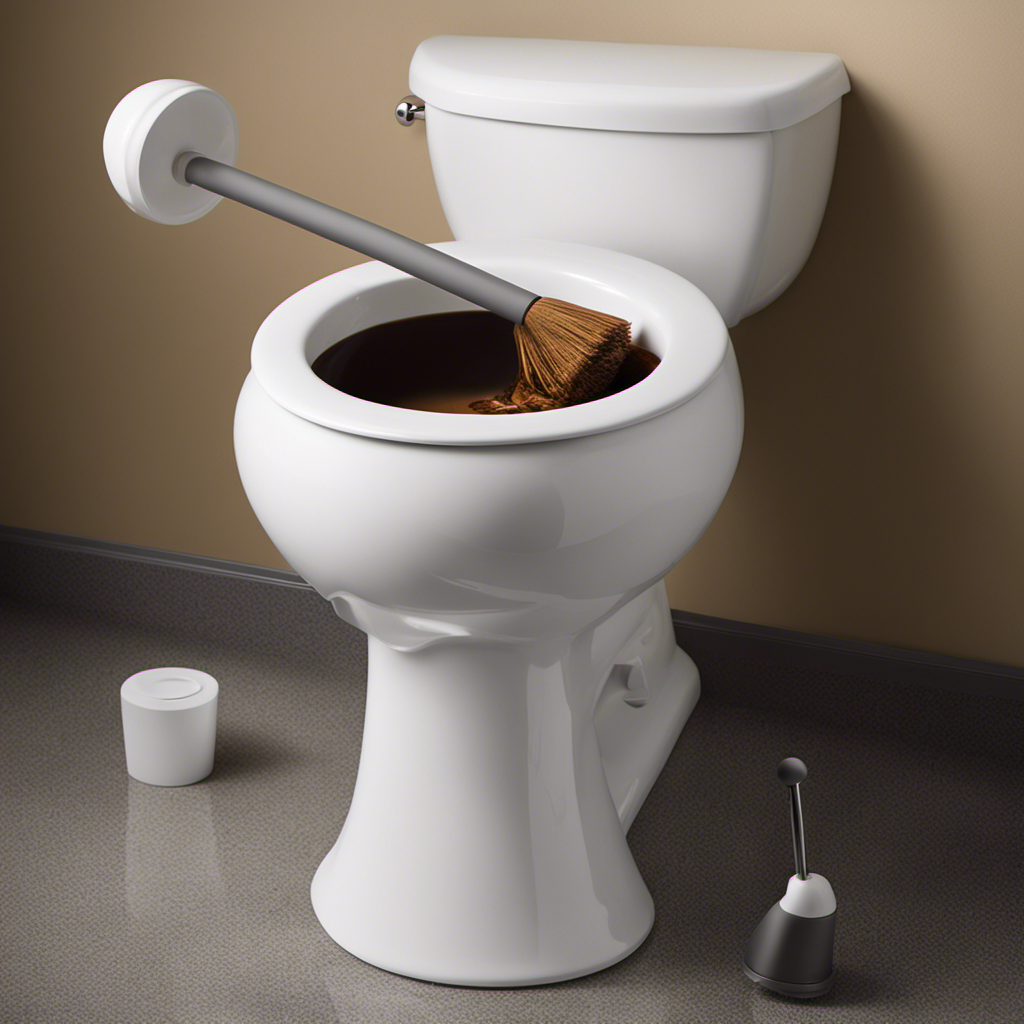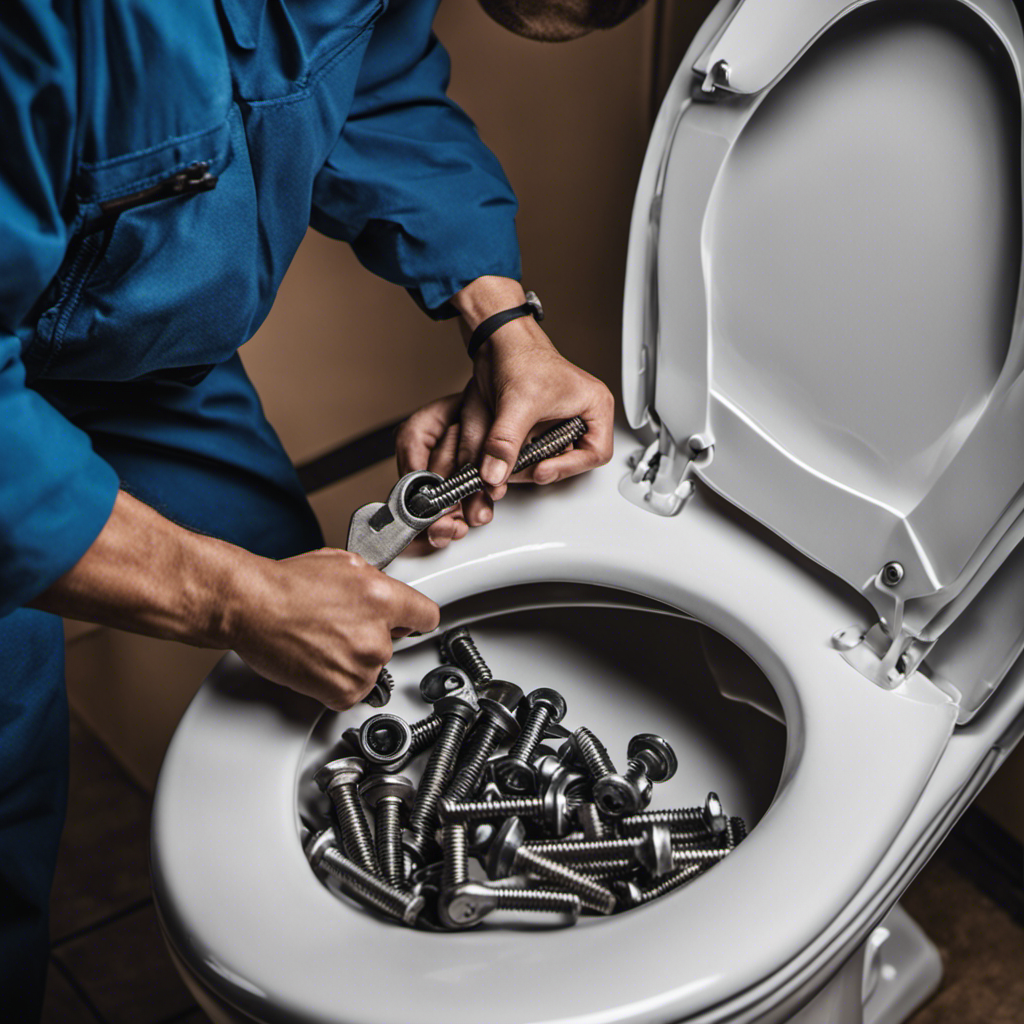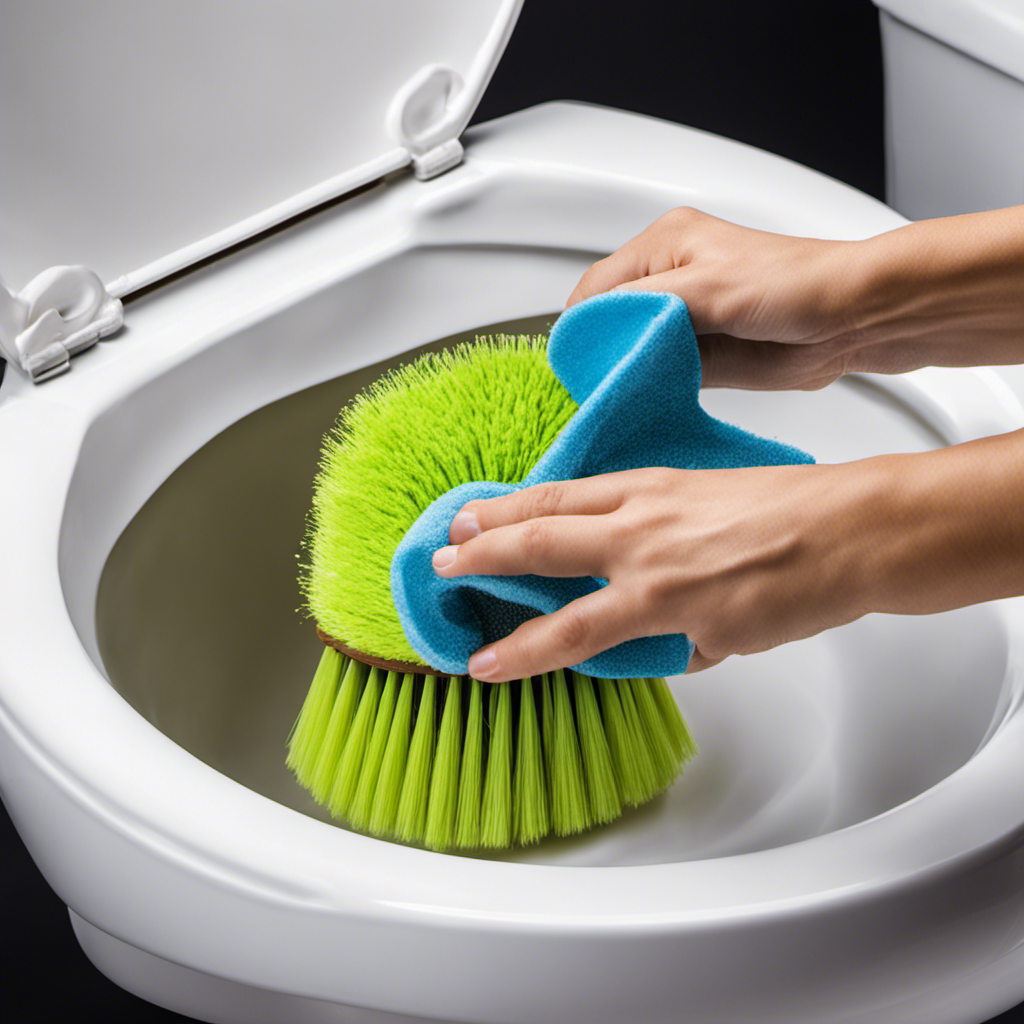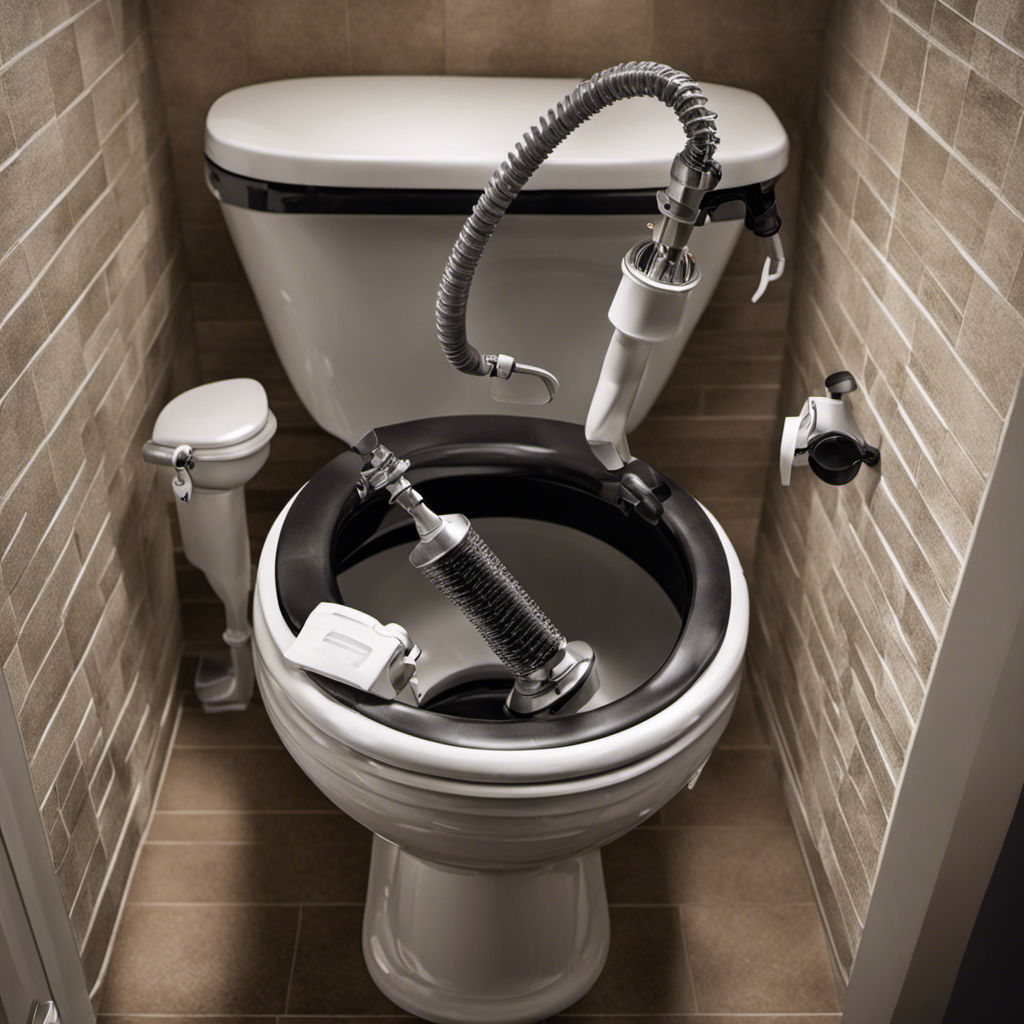Did you know that clogged toilets are one of the most common household plumbing issues? It’s an inconvenient problem that can happen to anyone, but fear not! I’m here to share some valuable tips on how to unclog a toilet with poop.
In this article, I’ll guide you through the steps, provide helpful advice, and recommend the best tools to tackle this messy situation.
So, let’s roll up our sleeves and get that toilet flowing smoothly again!
Key Takeaways
- Clogged toilets are a common household plumbing issue caused by improper disposal of non-flushable items, mineral deposits, debris, or malfunctioning toilet mechanisms.
- Having the necessary tools such as a plunger with a flange, a bucket, and rubber gloves is essential for unclogging a toilet effectively.
- The plunger method, using body weight to create suction, is a common and effective way to unclog a toilet.
- If the plunger method is not effective, a toilet auger (plumbing snake) can be used to physically dislodge stubborn clogs.
Understanding the Problem
Before we can start unclogging the toilet, it’s important to understand the problem.
Identifying the main cause and troubleshooting common toilet issues are crucial steps in effectively addressing the clog.
One common cause of toilet clogs is the improper disposal of non-flushable items such as wipes, sanitary products, or excessive toilet paper. These items can accumulate and create a blockage in the pipes.
Another possible cause is a buildup of mineral deposits or debris, which can restrict the flow of water.
Additionally, a malfunctioning toilet mechanism, such as a faulty flapper or a clogged trapway, can also lead to clogging.
Gathering the Necessary Tools
To gather the necessary tools, you’ll need a plunger, a bucket, and rubber gloves.
When it comes to toilet clog prevention and DIY toilet repairs, having the right tools can make all the difference. A plunger is essential for clearing clogs by creating suction and dislodging any blockages. Opt for a plunger with a flange, as it provides a better seal and increases effectiveness.
Additionally, a bucket is useful for catching any water that may overflow during the unclogging process. This helps minimize mess and makes cleanup easier.
Lastly, don’t forget to wear rubber gloves to protect your hands from any potential germs or bacteria.
Trying the Plunger Method
Now, you’ll want to firmly position the plunger over the drain hole, making sure it forms a tight seal. This is crucial for creating the necessary pressure to unclog the toilet. Once the plunger is in place, you can begin the plunging process.
Here’s a step-by-step guide to help you:
-
Push down forcefully: Use your body weight to push the plunger down, creating a strong suction. This will help dislodge the clog.
-
Pull up gently: After pushing down, pull up slowly to break the seal and allow water to flow through the drain.
-
Repeat if necessary: If the toilet is still not unclogged, repeat the plunging process a few more times.
Using a Toilet Auger
Using a toilet auger can be an effective alternative method for resolving stubborn clogs. When faced with a particularly stubborn clog, a plunger may not always do the trick. That’s where a toilet auger comes in handy.
This tool, also known as a plumbing snake, is specifically designed to reach deep into the toilet drain and break up or remove the blockage. The effectiveness of a toilet auger lies in its ability to physically dislodge the clog, rather than relying solely on water pressure like a plunger.
By inserting the auger and turning the handle, the clog can be broken apart or pulled out, allowing water to flow freely through the pipe again.
When faced with a stubborn toilet clog, consider trying a toilet auger as an alternative unclogging method.
Calling a Professional Plumber
If a stubborn clog persists, it might be time to call a professional plumber. While there are many DIY methods for unclogging a toilet, sometimes the problem is more complex and requires the expertise of a trained professional.
Here are three reasons why you should consider calling a plumber:
-
Experience: Professional plumbers have years of experience dealing with all types of plumbing issues, including stubborn clogs. They have the knowledge and skills to quickly diagnose the problem and provide an effective solution.
-
Specialized equipment: Plumbers have access to specialized tools and equipment that can effectively unclog even the most challenging blockages. These tools are often not available to the average homeowner and can make a significant difference in the outcome.
-
Cost-effective in the long run: While hiring a professional plumber may come with a cost, it can save you money in the long run. Attempting to fix the problem yourself or hiring an inexperienced plumber can lead to further damage and more expensive repairs.
When it comes to persistent clogs, it’s best to leave it to the professionals. They have the experience, equipment, and knowledge to get the job done efficiently and effectively.
Conclusion
In conclusion, unclogging a toilet with poop can be a challenging and messy task. However, with the right tools and techniques, it can be resolved effectively.
It is interesting to note that according to a survey conducted by a plumbing association, nearly 75% of clogged toilets are caused by excessive toilet paper usage. This statistic highlights the importance of being mindful of our toilet habits and using the appropriate amount of toilet paper to prevent clogs.
Remember, when in doubt, it’s always best to call a professional plumber for assistance.










